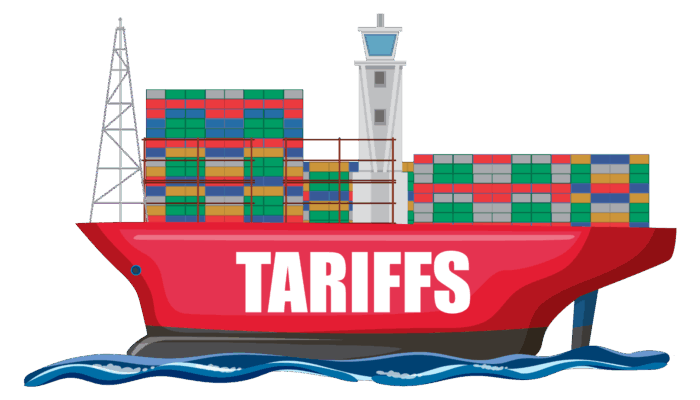The sale of pre-owned items has spanned centuries—from high-end auction houses to thrift stores and yard sales. And then came the internet which changed the resale game.
The launch of eBay and Craigslist in 1995 completely disrupted the market. Suddenly an individual reseller could tap a much larger customer base. This meant demand, even for obscure items, increased. But not everyone wants to sell their own stuff. And there is always the issue of trust. With low-price items, the risk is low. But with higher value items, the stakes rise. What if the products they receive don’t meet expectations? Enter the consignment specialists.
High-end resellers
US-based TheRealReal and French-based Vestiaire Collective are examples of luxury consignment retailers, complete with staff trained in counterfeit identification. Their value proposition? Sellers get top dollar for their pre-loved items, while buyers feel protected so they can shop with confidence.
Recommerce: By the Numbers
The projections of recommerce growth are huge. But if you drill down you’ll find that there are two key driving forces. Higher-end goods and young consumers. Consider the following:
- The luxury secondhand market is growing four times faster than the primary luxury market, at 12 percent per year versus 3 percent.
- More sellers are putting product into the market. In 2020, there were 6 million sellers, with a whopping 36.2 of them first-time sellers
- Thrifting is here to stay. In 2020, 33 million consumers bought secondhand apparel for the first time
- Many retail players experienced a significant shift in customer preferences and expectations during the COVID-19 pandemic: 65 percent of German and UK consumers now say they will buy more high-quality items that last longer, and 64 percent of Chinese consumers will consider more environmentally friendly products.
- According to a ThredUp survey:
- 45% of millennials and Gen Z say they refuse to buy from non-sustainable brands and retailers
- 43% of surveyed consumers say they are more likely to shop with a brand that lets them trade in old clothes for brand credit
- 34% say they are more likely to shop with a brand that offers secondhand clothing alongside new.
Recommerce: Benefits to Consumers
There’s a clear benefit to people who resell on sites like thredUP, TheRealReal, The Green Deal and Poshmark. Cash. But there are several benefits to buyers too. For example, they can:
- Save money: Pre-owned items come at a discount price. So consumers save. It also gives luxury brand lovers on a smaller budget a way to access out-of-reach collections.
- Save the planet: Buying used is better for the planet. Given that fashion manufacturing uses so many resources, this makes consumers feel good. So retailers will need to find new ways to court them—including recommerce.
- Save space: Conscious consumption is all the rage. So is small space living. In short, consumers don’t want as much ‘stuff’ in their lives. Yet feel guilty if they throw things out. Recommerce gives them a sustainable way to clean out their closet.
Recommerce has become so popular that the pre-owned products market is currently worth approximately $36 billion and is projected to double in the next five years to $77 billion.
The Challenge: How Do You Handle Returns?
One of the biggest challenges of recommerce is handling the returns—often treated as a blind return. This is reverse logistics at its essence. The question is, do you do it in-house or outsource?
TheRealReal has a custom multi-step process that validates whether items are genuine or knockoffs. Retailers like Patagonia use a service (Trove) to process returns and operate a separate microsite for used goods. So which should you choose? Here are some questions to consider:
- How many items do you expect to receive?
- Where will you process them?
- What is your capacity for processing them?
- How many steps are there in the process? Will it include cleaning and repairs?
- Will the credit you issued to the customer be dependent on the condition of the item?
- How will you determine the sale price?
- Do you want a fully integrated brand experience (list used items alongside new) or sell used items on a separate microsite?
What’s the role of an Order Management System in recommerce?
For retailers who choose to handle recommerce returns in-house or just outsource parts (like cleaning and repairs), a flexible order management system (OMS) can help. Just like any other fulfillment process, you can use it to orchestrate every step, for example:
- Initiate a blind return
- Consolidate items for shipment to your processing facility
- Manage manual steps like quality checks (in a similar way to Value Added Services)
- Track items throughout the process
- Trigger events in other systems (such as your ERP or CRM)
- Trigger notifications to staff and customers
- Automatically make the item available online when it’s ready for resale.
That way, you can craft the process that best fits your business and your customer expectations. Fluent Order Management allows you to do all of this and more, readily enabling you to succeed.
Flexibility and scalability are key in choosing the right commerce platform for your business, says Filip Elverhøy, co-founder of The Green Deal, a platform dedicated to making fashion returns environmentally more sustainable. commercetools, named a leader in the 2021 Gartner Magic Quadrant for Digital Commerce, offers a viable solution. A platform that is based on MACH technology; Microservices support, API first, Cloud-native and Headless. MACH is proving to be foundational to a new generation of software and systems integrators. This enables customers to experiment and bring new ideas to life without extensive costs. Lowering the total cost of ownership as you only buy and pay for the services you require.
How will you explore recommerce?
The precedents are out there. Young shoppers value sustainable brands. While high-value customers like to trade in items so they can buy your latest collection. So the question is, do you want to own the process or use a third-party service?
With the right Order Management System, you can handle all the reverse logistics elements that make recommerce possible. Paired with a commerce platform that allows seamless integration with more than 300 microservices you will be able to handle even the largest traffic peaks.
The challenge here is the processing of used merchandise. But once you iron out the details, you’ll have a unique opportunity to create lifelong relationships with customers who care about what happens to garments after they’ve enjoyed them.



